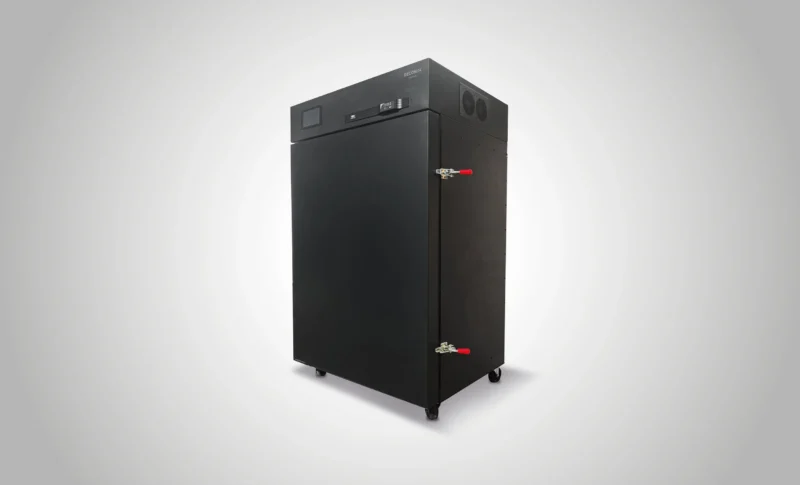There is a critical call to action for cannabis operators across the supply chain to become more data-savvy. Investments in data and analytics are likely to be a key driver in success–or failure–throughout our industry in the coming years. Increased competition, shifting consumer demand, and an ever changing regulatory landscape are just a few of the challenges that cannabis leaders must use data to address, lest they risk losing market share and commercial success.
These data analyses and the tools supporting them are how consumer brands like Target, Netflix, Starbucks and more ensure their most relevant ads materialize on your screens. These ads provide for your most-frictionless shopping experience, whether that’s on their sites, apps, social media platforms, or right in your email inbox.
Data isn’t only helpful for marketing and advertising. It also enables business leaders to make educated strategic decisions, optimize operations, boost customer engagement, meet compliance requirements, and spur innovation. In fact, 91.9% of Fortune 1000 organizations from Wavestone’s 2024 report expressed the achievement of measurable value from data and analytics investments last year.
In cannabis, operators must start leveraging their data and the associated insights to analyze their competitive landscapes and make the best possible predictions. Then, enterprise—vertical, multi-location and multi-state—cannabis businesses across the supply chain will be able to unlock insights to make cannabis shopping experiences as frictionless for customers and fruitful for businesses as possible. Many cannabis leaders are aware that they already have the necessary data to predict trends, optimize procurement, manage inventory, enhance customer experiences and much more, however the industry as a whole must invest in better solutions to make this information actionable.
By harnessing the power of the data you already possess from your point of sale system, seed-to-sale software, inventory management system, and any marketing or sales tools, you can improve the quality of your high-level and granular decision making and forecasting.
Launching your company’s analytics efforts might feel overwhelming at first. From my desk, as a strategist supporting the day-to-day financial activities of the cannabis industry, here’s what I’d recommend. Start by listing out your current, pre-existing goals. Then, explore the following KPIs you might not be tracking yet in the categories of sales, inventory, product, and your customers.
Sales Data Insights and KPIs
Sales Growth Rate:
- Formula: (Current Period Sales − Previous Period Sales) / Previous Period Sales × 100%
- Insight: The sales growth rate measures the rate at which sales are increasing or decreasing over time, helping both B2B and B2C cannabis operators better understand market trends and the effectiveness of sales strategies.
Average Transaction Value (ATV):
- Formula: Total Sales / Number of Transactions
- Insight: The ATV indicates the average amount spent per transaction, providing insights into your customers’ purchasing behavior. Use this analysis as a benchmark to identify opportunities to increase revenue in applicable retail or wholesale scenarios.
Sales by Product Category:
- Formula: Category Net Sales Total / Total Net All Sales
- Insight: Sales by Product Category identifies which product categories contribute most to overall sales, guiding inventory, and marketing strategies. For example, if edibles are showing strong growth, the business should prioritize stocking and promoting those products. While retail teams might be great at observing these category sales velocities, supporting their conclusions with metrics is a great way to begin forecasting success.
Inventory Data Insights and KPIs
Inventory Turnover Ratio:
- Formula: Cost of Goods Sold (COGS) / Average Inventory
- Insight: This measures how often inventory is sold and replaced over a period. A higher turnover ratio indicates efficient inventory management, while a lower ratio suggests overstocking or slow-moving inventory. Benchmarking quarterly, monthly, or weekly inventory turnover is a good metric for planning sustainably into the future.
Days Sales of Inventory (DSI):
- Formula: (Average Inventory / COGS) × 365
- Insight: This KPI indicates the average number of days it takes to sell the inventory. This helps businesses understand how long products are sitting on shelves and can inform decisions on inventory levels and purchasing.
Stockout Rate:
- Formula: Number of Stockouts / Total SKUs × 100%
- Insight: A stockout is an inventory shortage. The stockout rate measures the frequency of stockouts, which can lead to lost sales and dissatisfied customers. Reducing the stockout rate can improve customer satisfaction and increase revenue.
Product Data Insights and KPIs
Product Performance:
- Insight: Analyze sales data for each product you offer to customers or other businesses to identify top-performing and underperforming products. This can help in making decisions about product discontinuation, reordering, or promotional efforts.
Gross Margin Return on Investment (GMROI):
- Formula: Gross Margin / Average Inventory Cost
- Insight: This KPI assesses the profitability of inventory, indicating how much gross profit is earned for every dollar invested in inventory. It helps in understanding the efficiency of inventory investment.
Product Affinity Analysis:
- Insight: Product affinity analysis identifies products that are frequently purchased together, enabling operators to optimize retail environments and experiences, as well as increase average basket size via bundling, promotional, and cross-selling strategies.
Customer Data Insights and KPIs
Customer Lifetime Value (CLV):
- Formula: (Average Purchase Value × Purchase Frequency) × Average Customer Lifespan
- Insight: CLV estimates the total revenue a business can expect from a single customer over their lifetime. It helps in understanding the long-term value of customers and informs customer acquisition and retention strategies. This could be an extra-competitive metric for plant-touching B2B businesses to leverage.
Customer Retention Rate:
- Formula: (Number of Retained Customers / Number of Customers at Start of Period) × 100%
- Insight: This measures the percentage of customers who continue to do business with your company over a specific time period. A higher retention rate indicates customer satisfaction.
Customer Acquisition Cost (CAC):
- Formula: Total Sales and Marketing Expenses / Number of New Customers Acquired
- Insight: CAC calculates the cost associated with acquiring a new customer. Understanding CAC helps in evaluating the efficiency of marketing efforts and the profitability of customer acquisition strategies. Notice the ratio between your acquisition cost and lifetime value of your customer relationships. Best practice connotes a healthy ratio of 3:1 and up to 5:1 CLV:CAC for optimal success.
It’s likely that your business already leverages some of these KPIs. The sooner you can enhance your team’s data-literacy and excitement for the success that can come from it, the better positioned your business is to win. In other words, start your data-driving engines, cannabis operators. The first step in forecasting success and future-proofing your cannabis business is leveraging your disparate stockpiles data.
In the coming years, I expect to see more solutions arise for simplifying the cannabis industry’s data analytics capabilities. A lot of cannabis data is disparately siloed. Trying to organize it manually can be challenging. Technologies that standardize and consolidate cannabis data will be key catalysts in driving the growth for cannabis businesses across the supply chain, and the cannabis industry as a whole.
Author
-

Mike Kennedy is a Co-founder and Chief Strategy Officer at Green Check Verified. Mike’s background is in helping community financial institutions leverage technology to better manage their compliance and risk functions, and he has helped hundreds of institutions develop and implement bespoke compliance programs.






